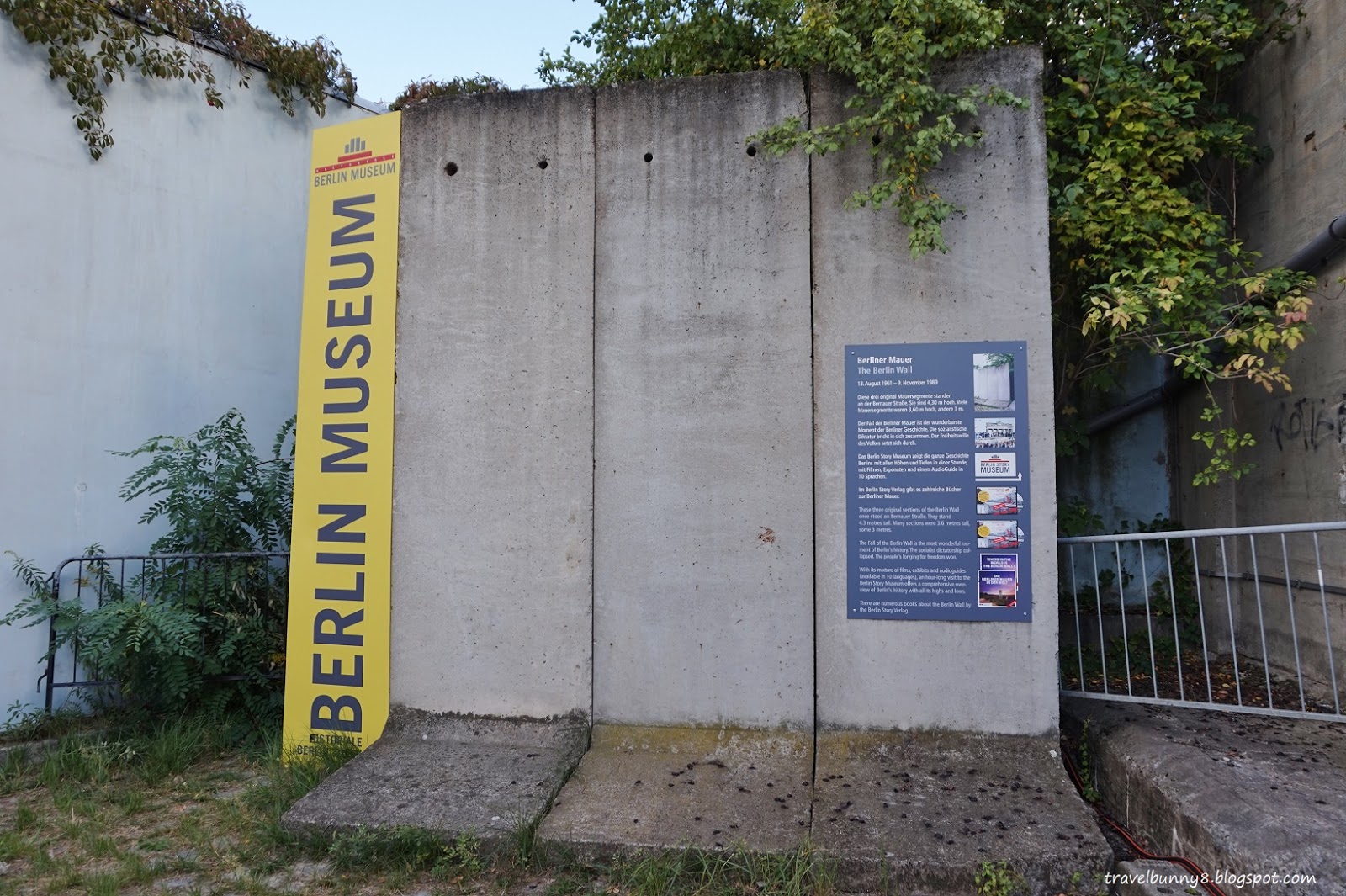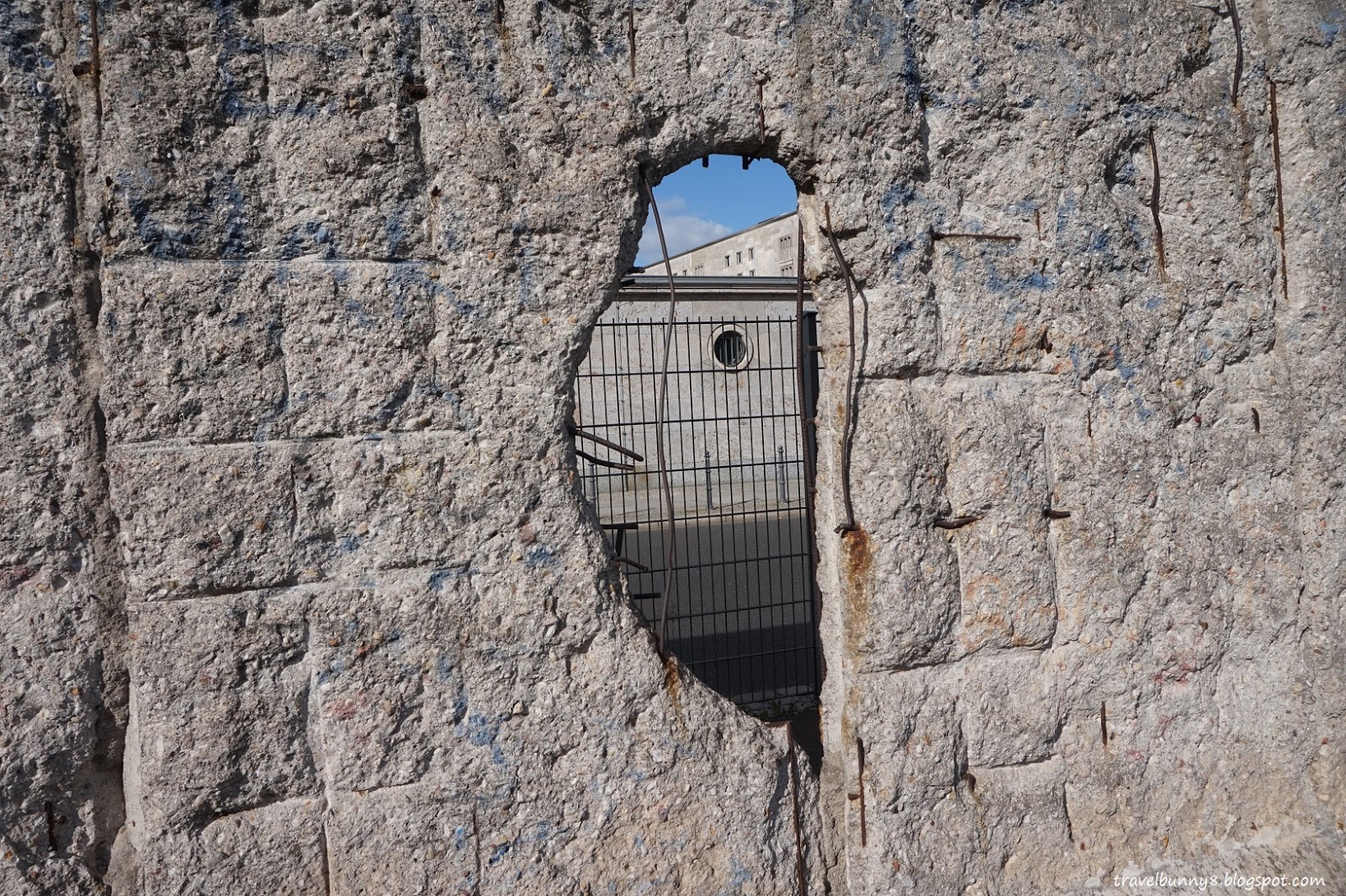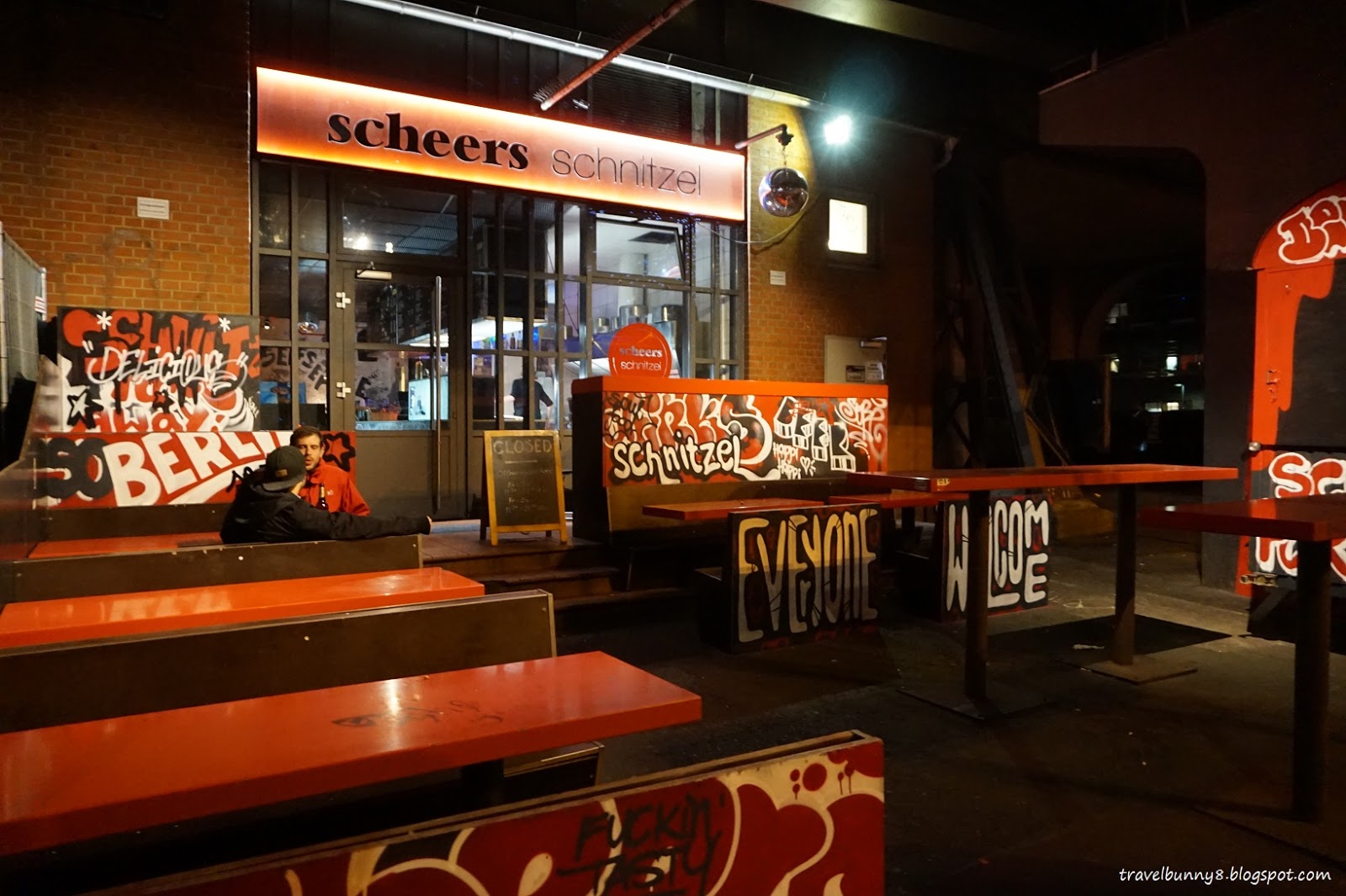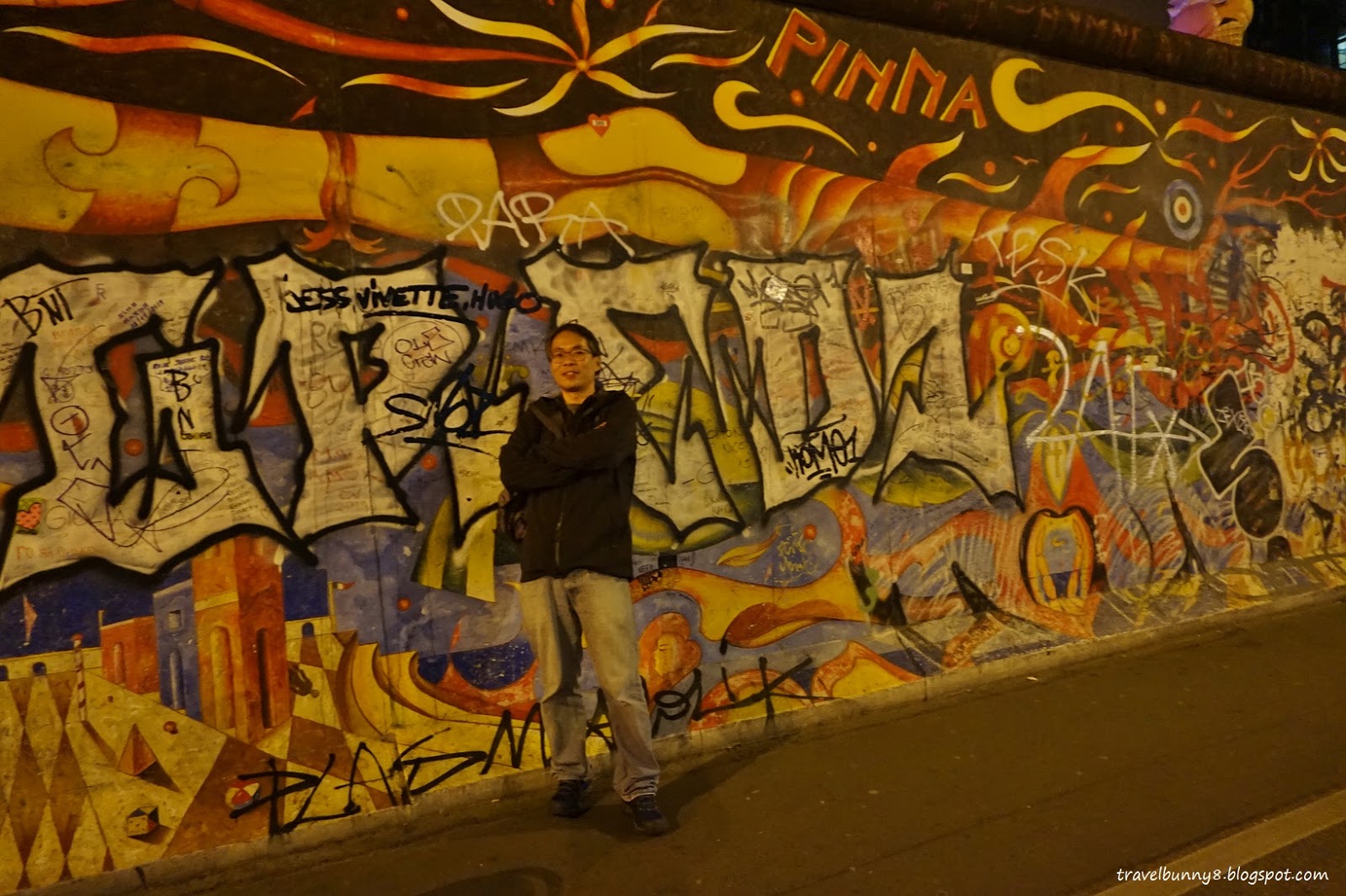[GERMANY] How to See Everything in Berlin in 24 hours

If you want to fully understand the history of WWII, division and reunification of Germany, you must come to Berlin, capital of Germany. I would recommend to spend at least 2 days to explore the city. However, if you have limited time like me (24 hours or less) to explore the city, fret not, you can still cover a lot of major attractions if you plan it right.
My 24 hours itinery as below:
10am Arriving in Berlin Central station-> tried currywurst at Curry36 (Berlin Central station) -> check in to Iblis Budget hotel Berlin -> Bode Museum (exterior) -> Pergamon Museum at 11pm entry -> Neus Museum -> Altes Museum ->
Alte Nationalgalerie (exterior only) -> Berlin Cathedral -> Berlin Palace (exterior) -> Rotes Rathaus (exterior) -> DDR Watch Tower -> Berlin Story Bunker -> Topography of Terror -> Checkpoint Charlie -> Brandenburg Gate -> Memorial To The Murdered Jews In Europe -> Hiltler’s Bunker -> Bundestag guided tour (Parliament) at 6.30pm -> dinner at Sheers Schnitzel -> Oberbaum Bridge -> East Side Gallery10am Arriving in Berlin Central station-> tried currywurst at Curry36 (Berlin Central station) -> check in to Iblis Budget hotel Berlin -> Bode Museum (exterior) -> Pergamon Museum at 11pm entry -> Neus Museum -> Altes Museum ->
This itinery is jam-packed and not suited for everyone. Be prepared to walk all day and skip lunch if you want to cover everything. My hubby and I visited some of the attractions separately to cover more grounds, especially on the Museum Island. There is a total of 6 museums covered under the Museum Island Pass. It is impossible to see everything in every museum on Museum Island given the limited time. We only spent about 2 hours there.

I flied from Copenhagen to Berlin in the morning and reached Berlin at 9am.

Took a bus from the airport to Berlin Central Station.


Currywurst is a must-try street food while in Berlin.

We tried it at Curry36 which is conveniently located inside the Berlin Central Station. It is best to start the day with a full stomach.

I also bought Berlin day ticket at the ticket machines inside Berlin Central Station to have access to all public transport in Berlin which is valid until 3am on the following day. Berlin is divided into three tariff zones: AB, BC and ABC. Most attractions is within zone AB.
A day ticket for zone AB now cost EUR 8.60 per adult (It was EUR 7 per adult last year). Child under 5 travel for free.
A single trip trip ticket for zone AB will cost EUR 2.90. So it's definitely worth it to buy the day ticket as you save money from the third trip onwards.
Website: https://sbahn.berlin/en/tickets/all-tickets/single-tickets/day-ticket/?tabs=tbc-t1

Took a bus to Iblis Budget Berlin which is located near Anhalter Bahnhof S-Bahn station. There is a beautiful ruins near this station.

The hotel is located side by side to its sister hotel, Iblis Hotel Berlin.

A night stay cost about EUR 90. We had a double bed and a single bed.

Breakfast is included. Above is the dining place. Check the hotel price at Agoda, Hotels.com, Booking.com and Trip.com.

After check-in, I quickly departed to Pergamon Museum as I had a timed entry at 11am. The time was quite tight but I managed to get there by 11.30am.
How to reach Museum Island?
It can be reached on foot from Friedrichstrasse U- and S-Bahn station.
The S-Bahn stop of Hackescher Markt is just 15 minutes walk away from the Island.
The M1 and 12 trams stop at nearby Kupfergraben, less than 5 minutes walk away.
The Lustgarten bus stop is 600m away from Pergamonmuseum and can be reached on buses 100 and 200.

Picture above is Bode Museum. I bought the tickets online. You can either buy individual tickets for the selected museums or buy a Museum Island Pass (EUR 18) which allows you to enter all 6 museums on the same day.
https://shop.smb.museum/#/tickets/list?date=2020-03-06&museum_id=76&ticketSelection=%5Bobject%20Object%5D
Take note that if you buy a Museum Island Pass, you can book Pergamon Museum timed entry online for free. You need to print out and bring both the pass and the timed entry ticket.

At first, we thought this is the Pergamon Museum. It is Das Panaroma and it is not included in the Museum Island Pass.

The entrance to Pergamon Museum is from here.

Backpacks are not allowed inside the museum. You can leave your coat and bag at the cloak room or locker.

You can buy your tickets here.

If you only have time to visit only one museum on the Museum Island, definitely visit the Pergamon Museum. Its impressive monuments such as Ishtar Gate of Babylon (see photo above), Pergamon Altar from Asia Minor (currently closed) and Roman Market Gate of Miletus will blow you away.

Ishtar Gate of Babylon is the 8th gate to the inner city of Babylon. It was part of a grand walled processional way leading into the city.



Roman Market Gate of Miletus, a large marble monument built in Miletus in the 2nd century and destroyed by earthquake in 10th or 11th century. It was excavated by German archeologists, rebuilt and placed on display in Pergamon Museum.

Aleppo Room is a reception room from a broker's home in Aleppo, Syria. It is in Islamic Art Museum in Pergamon Museum.

Other sections of Pergamon Museum. Wish to stay here longer but I had limited time.



Moved on to Neus Museum which is connected to Pergamon Museum. The museum houses the Egyptian Museum with extensive collection of Egyptian antiquities. Unfortunately, we missed the museum's famous artefact, Nefertiti bust.

Altes Museum.

Statue outside the Altes Museum.


The museum houses the Collection of Classical Antiques. Since 1998, it has displayed its Greek collection.


Alte Nationalgalerie (exterior only).


Berlin Cathedral is the city's most important Protestant Church.
Opening hours:
Sep-Feb: Mon-Sat 9am-7pm, Sun 12am-7pm
Mar-Oct: Mon-Sat 9am-8pm, Sun 12am-8pm
Admission fee: EUR 7 per adult. You can buy the tickets online here and skip the queue.
https://berlinerdom.ticketfritz.de/en/Shop/Index/Sightseeing




Interior of the church is just as grand as its exterior.


Take note that the Hohenzollern Crypt in the church is closed for construction and renovation from 1 March 2020.

Rotes Rathaus (exterior).

Berlin TV Tower.

Next, I headed to the DDR Watch Tower. At the end of the GDR era, there were more than 200 of these watchtowers on the Berlin border. Today, the watchtower is the last remaining one of its kind.
Getting here: U or S-Bahnhof: Potsdamer Platz


You can pay a small fee (EUR 3.50) to climb the two iron ladders on the inside to tree-top level and look out through the small windows just as the border soldiers used to.
The tower attraction is open as long as the weather is fair from Monday - Sunday, 11am - 5pm.
Berlin Story Bunker



It is set in a recreation of the infamous Führerbunker, where Adolf Hitler spent his last days. The exhibition showcases the sequence of events leading up to Hitler's suicide in 1945 in the Führerbunker.
Getting here: S-Bahnhof: Anhalter Bahnhof



Opening hours: 365 days (Mon-Sun) 10:00 -19: 00
last entrance / ticket office closes at 17:30
Tickets:
documentary " Hitler - how could it happen"
texts of documentation German & English
12.00 € regular, 9.00 € reduced
Audioguide [highly recommended] in German, English, French, Italian, Spanish, Dutch, Danish, Russian (60 min run time ; you are planning a total of at least 2 hours) only 1.50 €.
Tickets:
Berlin Story Museum. Including audio guide in ten languages *, average visit time about 1 hour
6.00 € regular, 4.50 € reduced
* German, English, French, Spanish, Italian, Dutch, Danish, Russian, Turkish, Chinese
Combined tickets is 13.50 €.
Once inside, you can't take any photo. There are cameras everywhere.

A section of Berlin Wall outside the story bunker.
Website: https://www.berlinstory.de/


The Topography of Terror exhibition is located on the site where the headquarters of the Gestapo, SS headquarters, and from 1939 the Reich Security Main Office were located.

The original buildings were largely destroyed by Allied bombing during early 1945 and the ruins demolished after the war.

Entrance is free. Opening hours is 10am - 8pm.

The photographs and documents in the indoor permanent exhibition illustrate the history from the time the Nazis took power until the end of the war.



A second permanent exhibition lies in the trenches excavated along Niederkirchnerstraße which is open from spring to autumn. The glass panels let you look into the excavations on the site. Exhibition panels tell the story of Berlin in the Weimar republic, Berlin under the Nazis and during the war, and the consequences of Nazi rule.


A 200-metre stretch of the Berlin Wall ran along the south side of the street. The wall here was never demolished. This site is the longest existing segment of the outer wall (the longer East Side Gallery section in Friedrichshain being actually part of the inner wall not visible from West Berlin).


Just 400 meters away from Topography of Terroris is the Checkpoint Charlie.
Getting here: U6 U KochstraB./Checkpoint Charlie station.


Checkpoint Charlie is another popular tourist attraction in Berlin. People wait in line to take photos at the checkpoint booth. The setting is complete with barrier, flag and sandbags.
In case you’re wondering, the name Checkpoint Charlie comes from the NATO phonetic alphabet (Alpha, Bravo, Charlie) because it was the third checkpoint opened by the Allies in and around Berlin after the border crossings at Helmstedt-Marienborn (Alpha) and Dreilinden-Drewitz (Bravo). It later became the most famous crossing point between East and West Germany.

Nearby Checkpoint Charlie is the Maurermuseum if you are interested to visit.

Stones taken from Berlin Wall are sold as souvenirs in stores.

A segment of the wall outside Museum Haus am Checkpoint Charlie.


The Brandenburg Gate is one of Berlin's most important monuments. It was closed throughout the Berlin Wall period. When Germany was reunified following the fall of the Berlin in November 1989,
Brandenburg Gate quickly reinvented itself into the New Berlin's symbol of unity. It was officially opened to traffic on December 22, 1989 and 100,000 people came to celebrate the occasion. Unfortunately this also resulted in severe damage to the monument which needed to be restored and was only officially reopened on October 3, 2002.
Getting here: S/U-Bahn Brandenburger Tor (S1, S25, S26) (U55)


Located close to the Brandenburg Gate, Memorial To The Murdered Jews In Europe was ceremonially opened in 2005.


On a site covering 19,000 square metres, Eisenman placed 2,711 concrete slabs of different heights on uneven concrete floor.



It is a unique experience to fully immerse yourself among the structure. The memorial and its wave-like form is different wherever you stand.

Location map of the Memorial To The Murdered Jews In Europe. Can you guess which shadow is mine? Haha.


Hiltler’s Bunker is within a short walking distance from Memorial To The Murdered Jews In Europe. Now this is an intriguing tourist attraction where there is nothing to see. Hitler's bunker was blown up by the Russians in 1947. It is now flats and a car park. There is only a signboard depicting its history and nothing else.

Since I booked a guided tour at Bundestag (Parliament) which started at 6.30pm, I walked north passed the Brandenburg Gate to Bundestag. Alternatively, you get there by U-Bahn Bundestag station (U55)/Bus 100 to Reichstag/Bundestag station.


The buildings nearby Bundestag look ultra modern.

Guided tours are available daily at 9.00 hrs, 10.30 hrs, 12.00 hrs, 13.30 hrs, 15.30 hrs, 17.00 hrs,18.30 hrs, 20.00 hrs.
Admission is free but you need to register online to join the guided tour. Since participant numbers are limited to a maximum of 25 people, I would recommend to book well in advance.
Website: https://visite.bundestag.de/BAPWeb/pages/createBookingRequest.jsf?lang=en



Take note that requests for guided tours can only be submitted for the current month and the following two months and requests to visit the dome can only be submitted for the current month and the following month. Also, you need to arrive half an hour before your time entry as you will need to pass through security check.

Waiting for the designated tour guide to arrive. Suggest that you use the bathroom during this 15 minutes interval before the tour starts.

Guided tours are offered explaining the functions, working methods and composition of Parliament, as well as the history and architecture of the building.

The young Russian's graffiti which were scribbled on the walls after they took the building on 30 April 1945 were meticulously preserved.


Surprise, surprise! We also walked past the Chancellor's office. You can knock on the door if you want.



We went up to the top floor where we could look down to the main hall (debating chamber).



Then we went back down to enter the main hall. The glass dome was really impressive.


Afterwards, we had the opportunity to visit the dome. The sun was setting and the sky was so beautiful.

Finally, we were at the roof where the dome is.


We were given some free time to walk around and see the surrounding Berlin cityscape.

This is the German Chancellery building which houses the personal office of the Chancellor and the Chancellery staff.

The glass dome was not open during my visit but I managed to sneak peek from the outside.

The guided tour was really informative and fun. Highly recommend to anyone coming to Berlin. Pick the evening time slot if you can as you can see the breathtaking sunset view from the dome.


As a bonus, you will also get to the different view of nearby Brandenburg Gate during day and night when it is lit up. Picture above is how the Brandenburg Gate looks like at night.

My last stop is the East Side Gallery and Oberbaum Bridge.
Getting to East Side Gallery: tram to Gedenkstatte Berliner Mauer / U1/M10 to Warschauer Stra. (S+U) / Ostbahnhof (S)
I chose to get down at Warschauer Stra. station. East Side Mall is right across the road outside the station.



But first, we were famish after walking for whole day. So we decided to have dinner at Sheers Schnitzel, a restaurant bar nearby the East Side Gallery.

Schnitzel (thin slice of meat breaded and fried) with fries and salad is a classic German dish. It was quite filling and affordable too. Website: https://www.scheers-schnitzel.de/



After dinner, we walked towards the Oberbaum Bridge down the street. The bridge is located next to the East Side Gallery. It is a double-deck bridge over the River Spree and one of Berlin's landmarks. The bridge was one of the crossover checkpoints from West to East only during the Cold War from 1961 to 1989. Armed guards used to patrol the banks of the river as a border area.


And finally the East Side Gallery.





East Side Gallery is the longest open-air gallery in the world. It consists of 105 paintings by artists from all over the world, painted directly on a 1,316 m long remnant of the Berlin Wall in 1990.

Simply known as the Fraternal Kiss, this graffiti painting by Dmitri Vrubel has become one of the best known pieces of Berlin wall graffiti art. The painting depicts Leonid Brezhnev and Erich Honecker in a socialist fraternal kiss, reproducing a photograph taken in 1979 during the 30th anniversary celebration of the foundation of the German Democratic Republic.
And this marked the end of my visit in Berlin! Hope this helps you in planning a trip to Berlin.
Map of Berlin:




![[MALAYSIA] How To Do A Self Guided Walking Tour in Kota Kinabalu](https://blogger.googleusercontent.com/img/b/R29vZ2xl/AVvXsEgR_cJjX4Shl9rsz0ufzxjmtLMq5PAvmTNDHypSVV2CYDaarZVj8EMznRkXqdVeCGg2yEMdFqPtI5rvrmMtJVSL1W9jqOtdCM2EFAc5ZTWn7XzPQV5sqS4s1DO0T_AuF0nq_dLQ53b9-ju3yyLJUrvU2TlhbmD4rDDV5-aPFaT2WEQZ1c257JXGUhyfsw/s72-c/20220524_131141.jpg)
![[JAPAN] Osaka Universal Studio](https://blogger.googleusercontent.com/img/b/R29vZ2xl/AVvXsEilW88BKY24KkvC4WjRfTktmxFmylxMsDD8emYT93x8bOlgqzMV1feAp28Si_GPn3hyFD2E97CMmP3X6kceDfFa9WB_7qr2BFvmu20iVJRaNlZd1BfoyUUj5ZgofOgK5lZGoqVDS4-1YLTo/s72-c/?imgmax=800)
![[FRANCE] My Favourite Paris Eiffel Tower Photo Spots](https://blogger.googleusercontent.com/img/b/R29vZ2xl/AVvXsEi220KHLfBDpyO53KorHwAb0KQEuiiaVDlrFYwEEAvs8YvKb-Edmyt7Hl7rZszN6qc-GM4e3SmjBS2pUiCiv8ljl8mnrUR93Ljxb0xGrSZ4sZLPRErpbAj29btKvnIC67xV93iKnrH3QRcc/s72-w781-c-h505/DSCF4372.JPG)



![[MONACO] How To Visit Monaco In One Day From Nice](https://blogger.googleusercontent.com/img/b/R29vZ2xl/AVvXsEgZkJeVAOmz4LTRwY2uDTK131UJVUWH_44GUUU3H-ni63dK2BlNqITBIh5Tdcpz9kXTUb7ePW7f-PQ1Y7E6B4lnqKEHs_nL3Eop-ouoFhxayMI4lNCcUG-oJnGMVwpGDlBu8lfgn10H_QHw/s72-c/DSC06605.JPG)
![[MOROCCO] My Day Trip to Blue City of Chefchaouen From Fez](https://blogger.googleusercontent.com/img/b/R29vZ2xl/AVvXsEh-7PIqgkIbF1BtTIOwfZ2R611OUrvV7f4Uxih57is62V_QD_DySCdifgR250MMruySrRmV7UMQ14iRsQZ6ifAaAWTqYacWSu__Lpm6QuqEjUcMZ4IJz-0SLDKeCV-nn6Zk1qbyMtMaZf4YupMArl4gXmmXoQUxHc6T-_eW-X2jvjh47rlu4Ddq4_Q48g/s72-c/DSC07946.JPG)
0 comments: